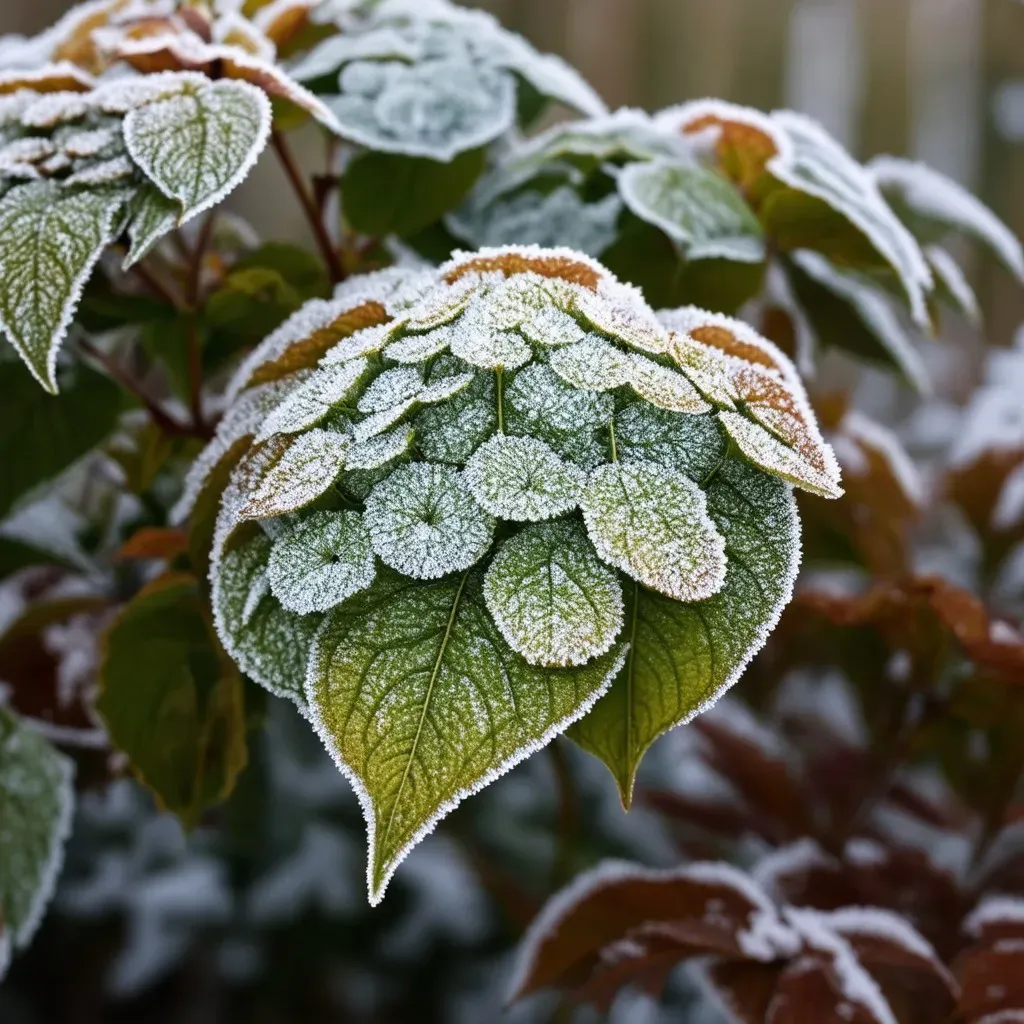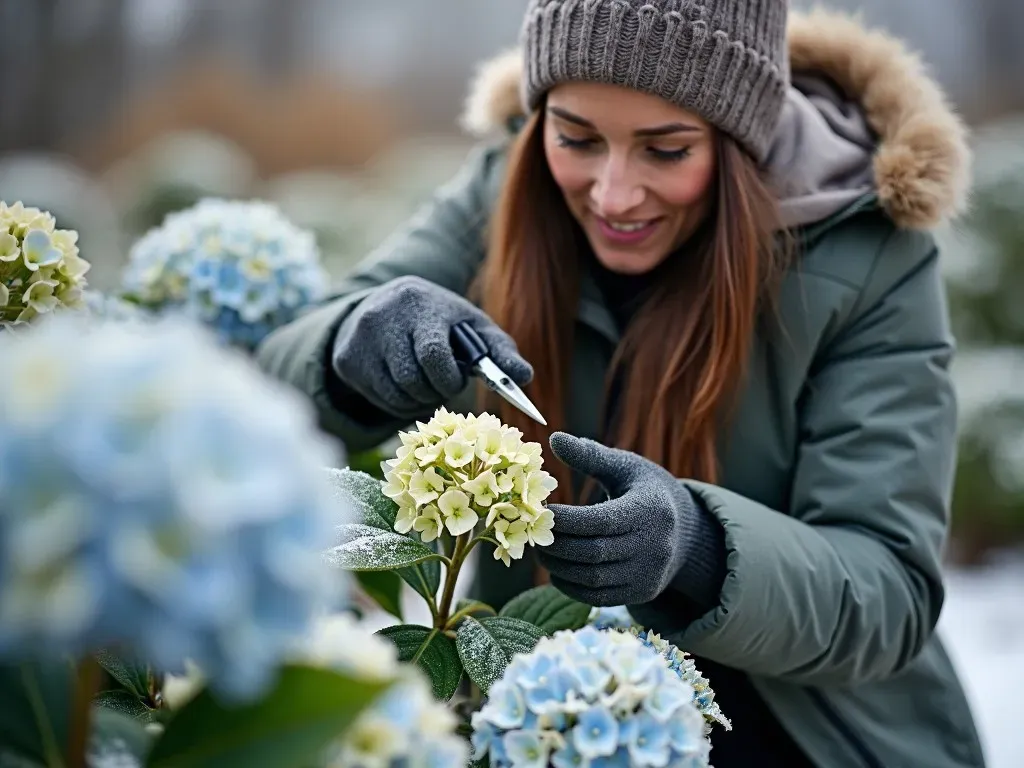Frost damage on hydrangeas can pose a significant threat to the health and vibrancy of these beloved garden plants. Understanding how cold can affect hydrangeas is essential for every gardener. With proper knowledge and preventive measures, you can help your hydrangeas thrive despite chilly temperatures.
Understanding Frost Damage on Hydrangeas
Frost damage occurs when temperatures drop below the freezing point and disrupt the plant’s normal physiology. Hydrangeas, especially those that bloom on old wood like hydrangea macrophylla, are particularly susceptible to frost damage in early spring, when tender new growth starts to emerge. The delicate buds and blossoms that develop during this period can be severely affected.
What Does Hydrangea Frost Damage Look Like?
Frost damage on hydrangeas manifests in various ways, including:
- Wilting or drooping leaves
- Color changes: Leaves may turn purple, scarlet, or black
- Crumbling leaves: Damaged leaves may feel dry and brittle
- Blackened stems and buds: Stems may develop black spots or shrivel up
Knowing how to identify these symptoms early can help you take the necessary steps to mitigate damage.

Temperature Tolerance of Hydrangeas
Hydrangeas show varying degrees of cold tolerance based on the species or variety. Here’s a general guide:
| Hydrangea Variety | Minimum Temperature Tolerance | Blooming Type |
|---|---|---|
| Hydrangea macrophylla (Bigleaf) | -5°F (-20°C) | Blooms on old wood |
| Hydrangea paniculata (Panicle) | -30°F (-34°C) | Blooms on new wood |
| Hydrangea arborescens (Smooth) | -20°F (-29°C) | Blooms on new wood |
| Hydrangea quercifolia (Oakleaf) | -10°F (-23°C) | Blooms on old wood |
How to Protect Hydrangeas from Frost
To protect your hydrangeas from frost and subsequent damage, consider the following strategies:
-
Timing is Key: Knowing when your area typically experiences the last frost of spring can help you plan your planting and pruning schedule.
-
Covering Hydrangeas: If a late frost is forecast, covering your hydrangeas with burlap, garden fabric, or even sheets can provide a buffer against the cold.
-
Mulching: Applying a thick layer of mulch around the base of hydrangeas can insulate roots and provide warmth.
-
Strategic Planting: Plant hydrangeas in sheltered locations, such as near structures or larger plants that can help protect them from harsh winds.
-
Indoor Care for Potted Hydrangeas: For those growing hydrangeas in pots, consider bringing them indoors before frost strikes.
Pruning and Reparative Measures After Frost Damage
If frost damage occurs, it’s essential to assess the situation promptly. Here’s a list of steps to take:
-
Wait for Warming Weather: Before pruning, make sure the weather has stabilized and temperatures are consistently above freezing.
-
Cut Back Damaged Areas: Use clean pruning shears to remove any blackened or wilted tissue. Cut back to healthy buds or foliage to encourage new growth.
-
Monitor For Recovery: Hydrangeas can often bounce back after frost damage, especially with timely pruning.

FAQs
1. Can hydrangeas survive a freeze?
Yes, hydrangeas can survive a freeze, but the extent of the damage depends on the severity of the frost and the type of hydrangea.
2. Is 40 degrees too cold for hydrangeas?
Generally, hydrangeas can tolerate temperatures down to 20°F (-6°C), but budding early in the spring can make them vulnerable to frost at 40°F (4°C) if temperatures drop suddenly.
3. Do I need to cover my hydrangeas for frost?
If you anticipate a frost and your hydrangeas are actively growing, covering them can help mitigate the risk of frost damage.
4. What should I do with frostbitten hydrangeas?
After a frost event, assess the level of damage. Prune away affected areas, and ensure the plant is watered appropriately to support recovery.
Additional Considerations
- Humidity: High humidity can exacerbate the effects of frost. Provide adequate air circulation to keep plants dry and reduce frost formation.
- Fertilizing: Post-pruning, you can use a balanced fertilizer to promote new growth.
Instead of losing hope when winter’s chill rears its head, take these proactive measures to protect your hydrangeas. Comprehension of these factors ensures that your garden remains splendid, vibrant, and bursting with hydrangeas come spring!
For more detailed guidance, you can visit Rooting for Blooms for expert tips on recovery from frost damage.

Employing a combination of timely actions, consistent monitoring, and knowledge will enable you to enjoy the beauty of hydrangeas year after year, without fear of frost damage.


